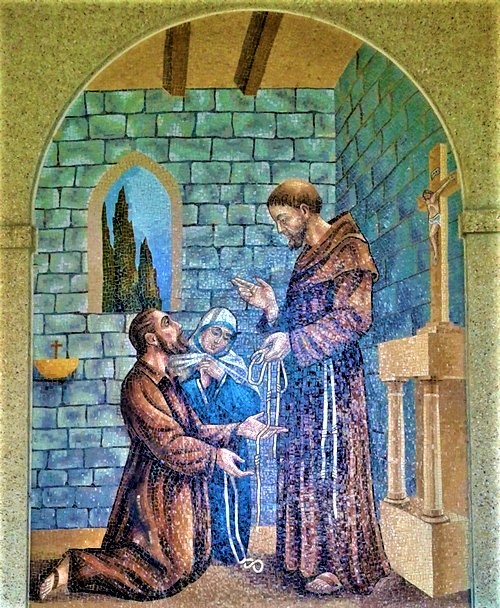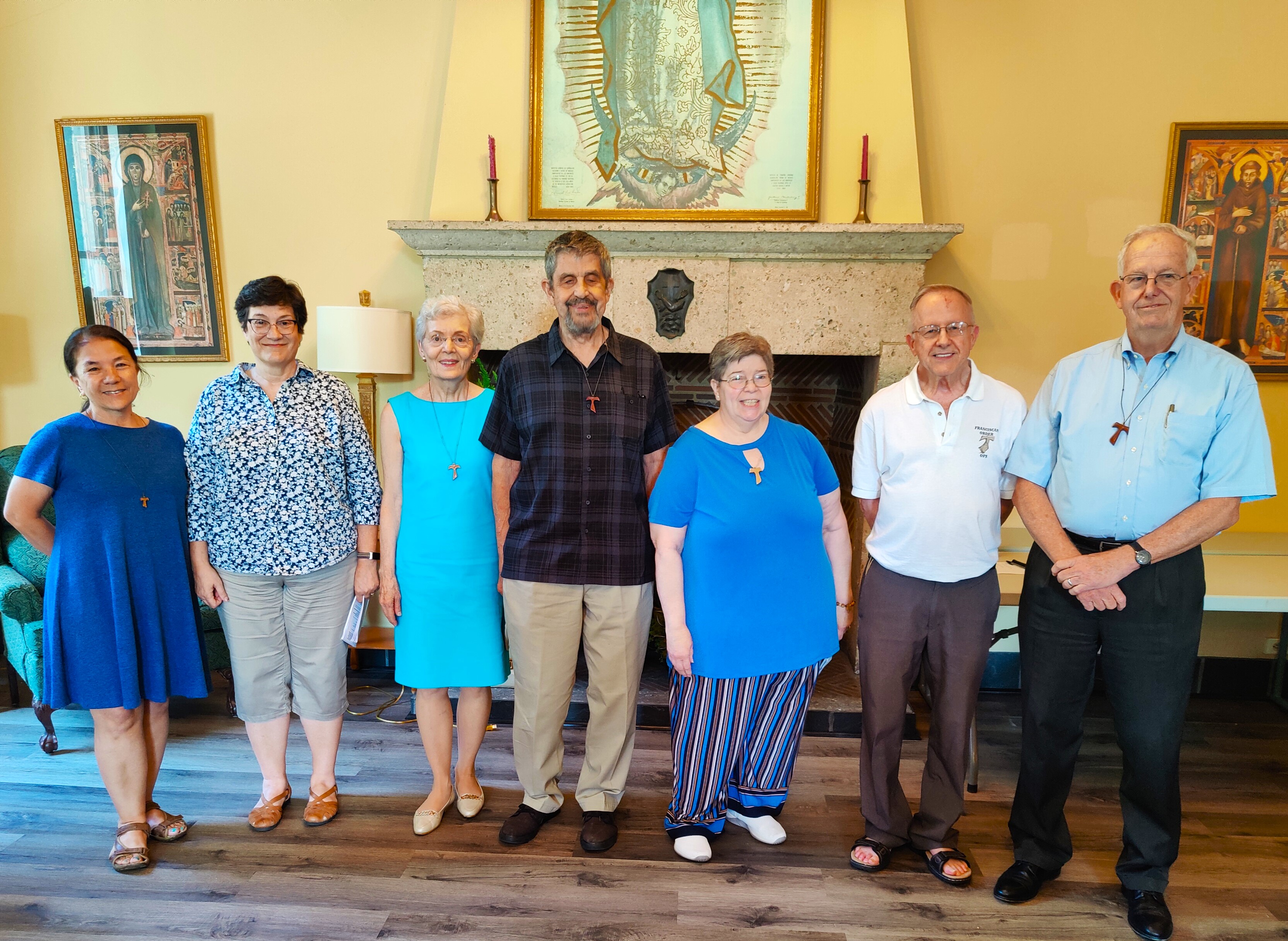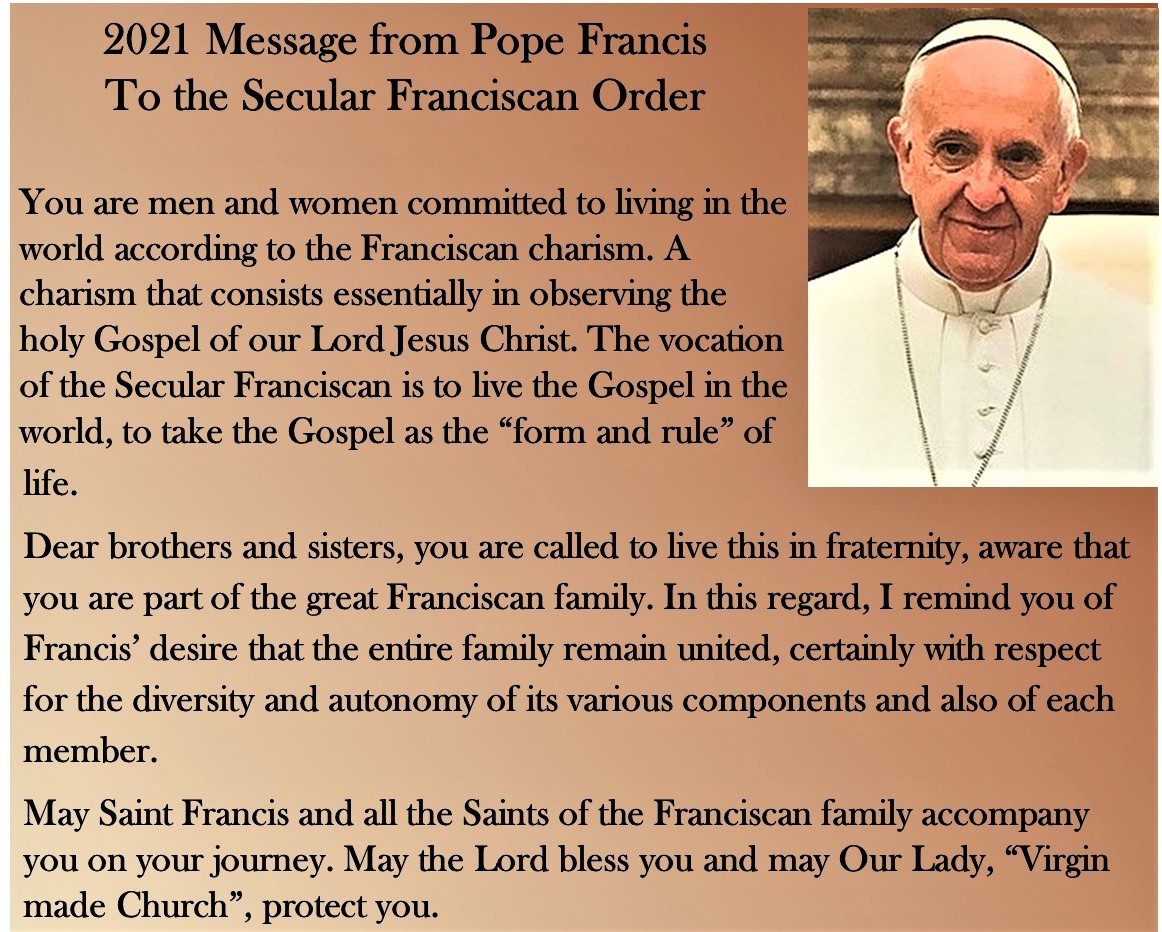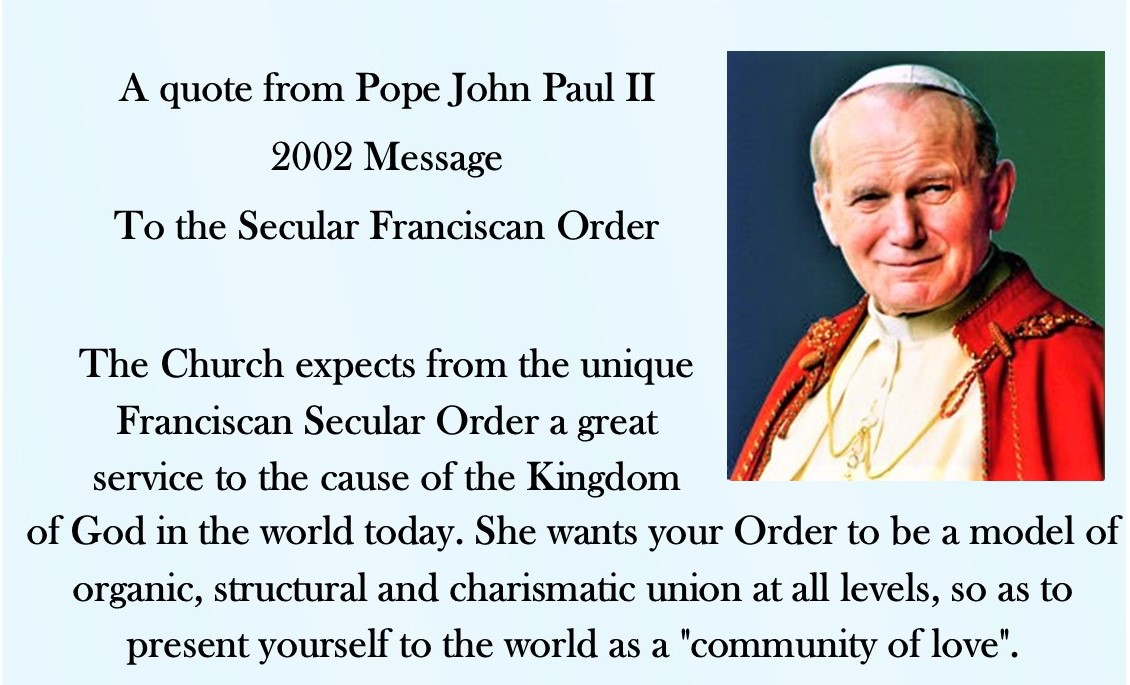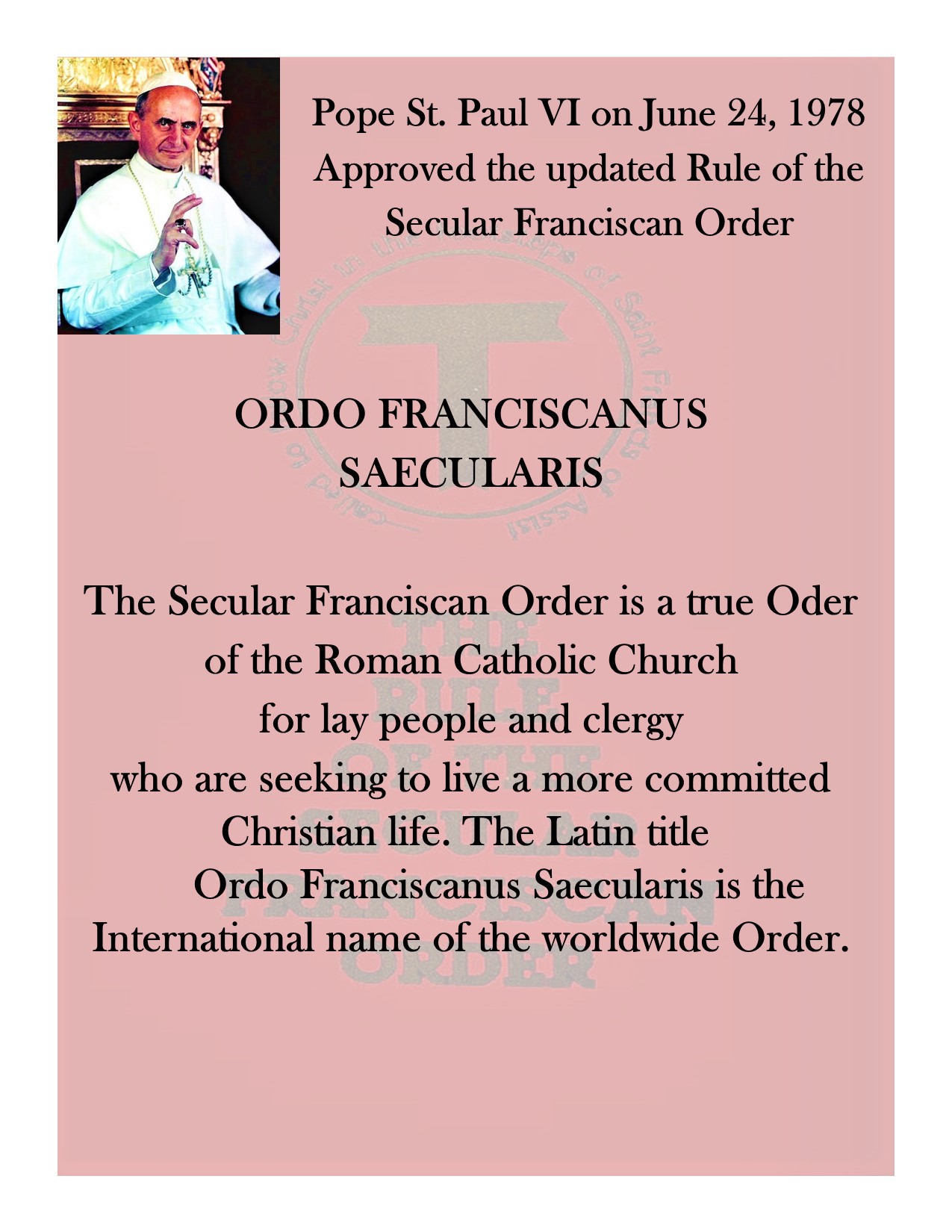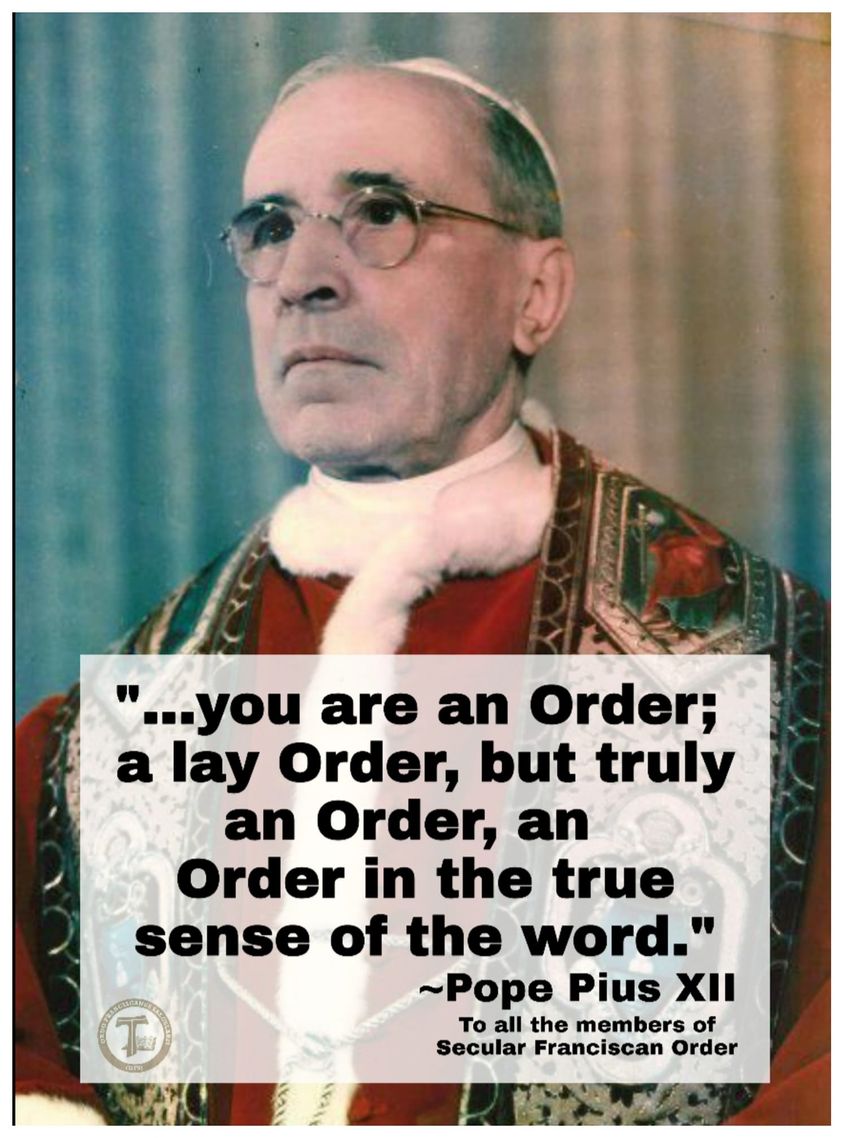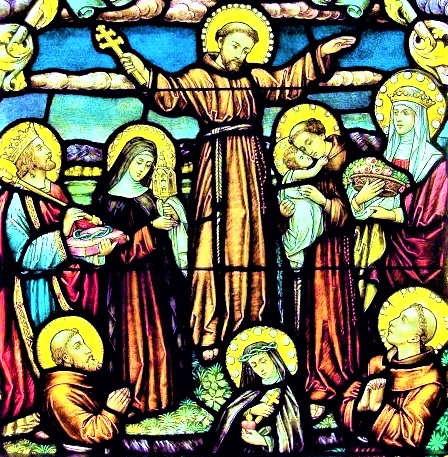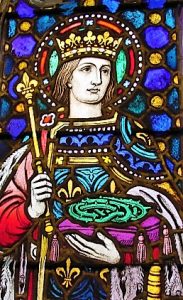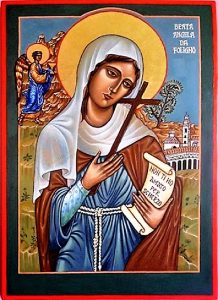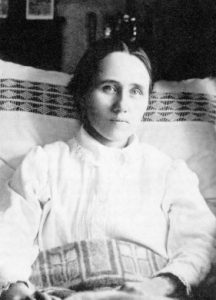There are many holy men and women who have been honored to become saints or are on the way to becoming saints in the Franciscan Family
2025 Franciscan Saints Calendar
Secular Franciscan Saints and Blessed
**************************************************
May 15
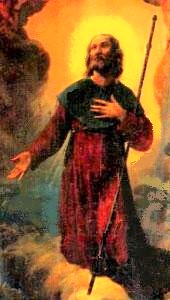
Blessed Amatus Ronconi, OFS
1238 – 1304
Secular Franciscan
Blessed Amatus was a thirteenth-century Tertiary who rose to great heights of sanctity by serving God as a hermit, as a pilgrim, and as a nurse. Born at Sldezzo, near Rimini, about 1238, he lost his parents while still very young, and was brought up by a relative. He was then urged to get married, but he felt that God called him to a life of prayer and penance. After joining the Third Order of St Francis, he fled to a solitary place and began to live as a hermit. By many, he was considered a fool, but God showed how much He was pleased with the virtuous life of Amatus by marvelous signs. A mysterious light was seen shining over the hut which served as his shelter, and heavenly songs were heard to issue from it.
Amatus left his hermitage at times to make pilgrimages on foot to Santiago de Compostela in Spain and other famous shrines, or to care for the poor and the sick. He founded the Hospital of St Mary of Mount Orciale, near Rimini, and there he spent the last years of his life as a nurse.
Whereas saints and blessed like Blessed Amatus Ronconi eagerly desired death and rejoiced when their hour came, many people are in terrible fear of death. Why is that? In some cases, it is because such people have sought all their happiness in this world, eager to taste all its pleasures without a thought of the will of God. They feel that their comedy is about to end, to be followed by a long tragedy. The fear that harries them is striking evidence that everything does not end with death.
“O Death, how bitter is the remembrance of Thee to the man who has peace in his possessions!” Also, mere attachment to material things without their having enjoyed them may at times fill people with fear at the thought of being separated from them by death. True Christians are mindful of those other treasures which we cannot lose in death and which constitute real comfort in that hour.
In 1304 Blessed Amatus Ronconi died at the age of sixty-six, and ever since then, he has been venerated as a saint. So many miracles were attributed to his intercession that Pope Pius VI approved his cult as Blessed, and his feast is celebrated at Rimini on May fifteenth. However, his name has not been placed in the Franciscan calendar.
*from The Franciscan Book of Saints, Fr. Marion Habig, OFM
**************************************************
May 16
St. Margaret of Cortona, OFS
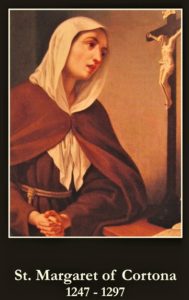
1247-1297
Secular Franciscan
Feast of the Patroness of our Region
This Magdalen of the Franciscan Order came into the world in the year 1247 at Laviano near Cortona in the province of Tuscany. When she was 7 years old, she lost her pious mother. She was neglected by her careless father, who married again within a short time, and her unsympathetic stepmother was harsh with her so that when Margaret was 18 years old, she left home to earn her bread among strangers.
She was possessed of rare beauty, and ere long this became a snare for her. For the space of 9 years, she gave herself up to a life of sin and scandal. Then one day she waited a long time in vain for her accomplice in sin to return home to the place where she lived with him. Presently his dog came to her whining and tugging at her dress. She followed the animal into the heart of the forest, and there she suddenly stood before the blood-stained corpse of the unfortunate man; his enemies had murdered him.
At the appalling sight, Margaret was stunned like one struck by lightning. Filled with terror she asked herself, “Where is his soul now?” Then and there she firmly resolved in the future to be even greater in penance than she had been in sin. Like the prodigal son, she returned repentant to her native town of Laviano.
In a penitential garb, her hair cut short, a cord around her neck, she knelt at the door of the church and publicly asked all the congregation to forgive the scandal she had given. Many people were edified at this public humiliation, but her stepmother was all the more embittered at it. She, as well as Margaret’s father, forbade her to enter the parental home again. This reception severely tempted Margaret to return to the road of vice, but God’s grace sustained her.
Led by divine grace, she went to Cortona, made a contrite general confession to a Franciscan there, and submitted to the spiritual direction of her confessor. In a poor little hovel, she now lived a secluded life, in penance, tears, and prayer, earning her scanty nourishment by hard manual labor.
Again and again, she begged for the habit of the Third Order, that she might be recognized by all the world as a penitent. But not until 3 years had elapsed and she had been severely tried, was her wish granted. She received the habit in 1277. Now her fervor increased, and it is almost incredible what rigorous penances she practiced from then on. Day and night she wept over her sins, and often sobs so choked her voice that she could not speak. Satan made use of every wile and snare to cause Margaret to relapse, but prayer, mortification, and humiliation successfully put him to flight.
When finally, after uninterrupted struggling, she had triumphed over every earthly inclination, God assured her that her sins were fully pardoned and granted her special proofs of His knowledge of the innermost secrets of hearts. In many instances, even when people came from great distances, she recalled grievous sins to their mind, while her exhortations and prayers were instrumental in bringing about conversion. Many souls were released from purgatory upon her prayers. Almighty God wrought many miracles through her even in her lifetime. Health was restored to the sick, a dead boy was raised to life, and at her approach evil spirits shuddered and left those whom they possessed.
Finally, after 23 years of rigorous penance, in the 50th year of her life, God called the great penitent to the Beatific Vision on February 22, 1297. Her body is preserved in a precious shrine in the Franciscan church at Cortona which bears her name. It is incorrupt even today and frequently emits a pleasant perfume. Several popes have confirmed the public veneration accorded her. Pope Benedict XIII canonized her amid great solemnity in 1728.
PRAYER OF THE CHURCH
O God, who didst bring back Thy servant Margaret from the road of perdition to the way of salvation, grant in the same mercy, that we who once were not ashamed to follow her astray may now be glad to imitate her in penance. Through Christ our Lord. Amen.
from THE FRANCISCAN BOOK OF SAINTS
**************************************************
June 22
Feast of St. Thomas More, OFS
Secular Franciscan

St. Thomas belongs to that class of Tertiaries who have grasped the true spirit of their Seraphic Father. It is a spirit of deep-seated piety and of contempt for the world, as well as of unswerving fidelity to Holy Church practiced in an exceptional degree and sealed with one’s blood.
His father was a knight. Thomas was born in London in 1480. Having been a very devout youth, he became a lawyer. His services were constantly in demand, but nevertheless he always found time to attend holy Mass daily and to perform other pious practices.
As the father of a family, he was concerned that his children should be reared in the fear of God. He became famous for his book entitled Utopia. By means of his “Kingdom of Nowhere”, he scourged in fine satire the evils that were eating their way into the Church and the State.
Through Henry VIII he became attached to the royal court and was finally appointed Lord High Chancellor. The time had now arrived in which the Tertiary was to manifest how sincerely he had grasped the spirit of the Saint of Assisi. As was to be expected, even as a statesman Thomas More continued to make his accustomed religious practices. He set aside every Friday as a day of introspection. His charity was without limit.
He experienced special delight in serving the priest at Holy Mass, and he received Holy Communion daily. He was told, by way of reproach, that it was unbecoming for a layman with so much work to do and so many distractions to communicate daily. But he replied: “You are advancing the very reasons for the need for frequent Holy Communion. If I am distracted, Holy Communion helps me to become recollected. If opportunities are offered me each day to offend my God, I arm myself anew each day for the combat by the reception of the Eucharist. If I am in special need of light and prudence in order to discharge my burdensome duties, I draw nigh to my Savior and seek counsel and light from Him.”
But it was not long before his doom was sealed. Blinded by unholy passions, King Henry divorced his lawful wife and married Anne Boleyn, a lady in waiting at the court. When Rome justly condemned his adulterous act, the king severed his connections with Rome and set himself up as the head of the Church in England. Whoever disapproved of his conduct was doomed to die.
The first person who opposed the king was his loyal chancellor, Thomas More. He was cast into prison. There he wrote a pamphlet entitled Death Endured for the Faith Need Cause No Fear. When his wife endeavored to persuade him to give up his opposition and prolong his life, he asked her just how long she believed he would still live. She answered, “At least twenty years.” “Indeed!” said Thomas More. “Had you said a few thousand years, that might make a difference. But surely even he would be a poor merchant who would run the risk of losing an eternity for the sake of a thousand years.” He was beheaded on July 6, 1535.
Pope Leo XIII beatified this great Tertiary, and Pope Pius XI canonized him on May 19, 1935.
**************************************************
August 14
St MAXIMILIAN KOLBE, OFM Conv.
Also known as Apostle of Consecration to Mary
Maximilian Mary Kolbe; Massimiliano Maria Kolbe
St. Maximilian Kolbe was born as Raymund Kolbe on January 8, 1894, in the Kingdom of Poland, part of the Russian Empire. He was a Polish Conventual Franciscan friar and a martyr in the German death Camp of Auschwitz during World War II.
St. Maximilian Kolbe was very active in promoting the Immaculate Virgin Mary and is known as the Apostle of Consecration to Mary. Much of his life was strongly influenced by a vision he had of the Virgin Mary when he was 12.
“That night I asked the Mother of God what was to become of me. Then she came to me holding two crowns, one white, the other red. She asked me if I was willing to accept either of these crowns. The white one meant that I should persevere in purity and the red that I should become a martyr. I said that I would accept them both.”
One year after his vision, Kolbe and his elder brother, Francis joined the Conventual Franciscans. In 1910, Kolbe was given the religious name Maximilian, after being allowed to enter the novitiate, and in 1911, he professed his first vows.
At the age of 21, Kolbe earned a doctorate in philosophy from the Pontifical Gregorian University. He would also earn a doctorate in theology by the time he was 28.
St. Maximilian Kolbe organized the Militia Immaculata (Army of the Immaculate One) after witnessing demonstrations against Pope St. Pius X and Benedict XV. His goal was to work for the conversion of sinners and enemies of the Church, specifically, the Freemasons and he would so with the intercession of Mary.
In 1918, he was ordained a priest and continued his work of promoting Mary throughout Poland. Over the next several years, Kolbe took on publishing. He founded a monthly periodical titled, “Rycerz Niepokalanej” (Knight of the Immaculate). He also operated a religious publishing press and founded a new Conventual Franciscan monastery at Niepokalanow, which became a major religious publishing center.
Kolbe also founded monasteries in both Japan and India. To this day, the monastery in Japan remains prominent in the Roman Catholic Church in Japan.
In 1936, Kolbe’s poor health forced him to return home to Poland, and once the WWII invasion by Germany began, he became one of the only brothers to remain in the monastery. He opened up a temporary hospital to aid those in need. When his town was captured, Kolbe was sent to prison but released three months later.
Kolbe refused to sign a document that would recognize him as a German citizen with his German ancestry and continued to work in his monastery, providing shelter for refugees – including hiding 2,000 Jews from German persecution. After receiving permission to continue his religious publishing, Kolbe’s monastery acted as a publishing house again and issued many anti-Nazi German publications.
On February 17, 1941, the monastery was shut down; Kolbe was arrested by the German Gestapo and taken to the Pawiak prison. Three months later, he was transferred to Auschwitz.
Never abandoning his priesthood, Kolbe was the victim to severe violence and harassment. Toward the end of his second month in Auschwitz, men were chosen to face death by starvation to warn against escapes. Kolbe was not chosen but volunteered to take the place of a man with a family.
It is said during the last days of his life Kolbe led prayers to Our Lady with the prisoners and remained calm. He was the last of the group to remain alive, after two weeks of dehydration and starvation. The guards gave him a lethal injection of carbolic acid. The stories tell that he raised his left arm and calmly awaited death.
St. Maximilian Kolbe died on August 14 and his remains were cremated on August 15, the same day as the Assumption of Mary feast day.
Recognized as the Servant of God, Kolbe was beatified as a “Confessor of the Faith” on October 17, 1971, by Pope Paul VI and canonized by Pope John Paul II on October 10, 1982. Pope John Paul II declared Kolbe, not a confessor, but a martyr.
Kolbe is often depicted in a prison uniform and with a needle being injected into an arm. He is the patron saint of drug addicts, prisoners, families, and the pro-life movement and his feast day is celebrated on August 14.
**************************************************
Aug 25
St. Louis IX, King of France, OFS
1215-1270
Secular Franciscan
Patron of the Secular Franciscan Order
King St. Louis was born in the castle at Poissy near Paris on April 25, 1215. His devout mother, Blanche, was determined that he should be educated not only for the earthly kingdom he was to govern but still more for the kingdom of heaven. She accustomed him to look upon all things in the light of faith, and thus laid the foundation for that humility in good fortune and endurance in misfortune which characterized the holy king.
Louis was crowned king when he was only 12 years old. His mother, however, was entrusted with the actual government of the kingdom during his minority. Meanwhile, Louis was being educated in all the duties of a Christian prince. Among his instructors, there were several Franciscan friars, and later on the young king himself joined the Third Order of St. Francis.
Louis had governed his kingdom for several years in his own name, when he vowed, in the course of a serious illness, that if he would recover, he would make a crusade to the Holy Land, to wrest the holy places from the hands of the infidels. Upon regaining his health he at once carried out his vow. He took the fortress of Damietta from the Saracens but was taken captive after his army had been weakened by an epidemic.
After he had borne the sufferings of a prisoner of the infidels for several months with holy serenity, the terms for his release were submitted to him; but there was attached to these terms an oath, that if he did not fulfill them, he would deny Christ and the Christian religion. The holy king replied: “Such blasphemous words shall never cross my lips.” They threatened him with death. “Very well,” he said, “you may kill my body, but you will never kill my soul.” Filled with admiration at his steadfast courage, they finally released him without objectionable condition. After securing many other terms favorable to the Christians, he was obliged to return to France, his mother had died in the meantime.
In the government of his kingdom, Louis proved how profitable piety is in every respect. He promoted the welfare of the country and his people in a remarkable manner. His life as a Christian and as a Christian father was so exemplary that he has been found worthy to be chosen as the patron and model of Tertiaries. The most important principle of his life was the observance of the laws of God under all circumstances. His biographer assures us that he never lost his baptismal innocence by mortal sin. He himself set such store by the grace of baptism that, in confidential letters, he took pleasure in signing himself “Louis of Poissy,” because it was in the parish church there that he had been baptized.
Louis never tolerated cursing or sinful conversation either among the servants or among the courtiers, and never was he heard to utter an unkind or impatient word. He wished to avoid all unnecessary pomp and luxury at court so that more help could be rendered to the poor, of whom he personally fed and served several hundred. His wardrobe was as simple as it could fittingly be, and at all times he wore the insignia of the Third Order under his outer garments. On special occasions, he publicly wore the habit of the Tertiaries.
In order to curb sensuality, he not only observed all the fasts of the Church with unusual severity but denied himself certain food for which he had a special craving. He was a most solicitous father to the 11 children with which God blessed his marriage. He himself prayed with them daily, examined them in the lessons they had learned, guided them in the performance of the works of Christian charity.
He fostered special devotion to the sufferings of Christ; and it was a great consolation for him when he gained possession of the Crown of Thorns, for the preservation of which he had the magnificent Holy Chapel built in Paris. When serious complaints concerning the oppression of the Christians in the Holy Land reached his ears, he undertook a second crusade in 1270, but on the way, he died of the plague, contracted while visiting his sick soldiers.
Amid exclamations of holy joy, because he was going into the house of the Lord, he surrendered his soul to God on August 25. St. Louis was canonized by Pope Boniface VIII in 1297.
**************************************************
September 17
Feast of the Stigmata of our holy father Francis
Feast
Francis imitated Christ so perfectly that towards the end of his life our Lord wished to point him out to the world as the faithful imitator of the Crucified, by imprinting His five wounds upon his body.
Two years before his death, when, according to his custom, Francis had repaired to Mt. La Verna to spend the 40 days preceding the feast of St. Michael the Archangel in prayer and fasting, this wonderful event took place. St. Bonaventure gives the following account of it:
“Francis was raised to God in the ardor of his seraphic love, wholly transformed by sweet compassion into Him, who, of His exceeding charity, was pleased to be crucified for us. On the morning of the feast of the Exultation of the Holy Cross, as he was praying in a secret and solitary place on the mountain, Francis beheld a seraph with six wings all afire, descending to him from the heights of heaven. As the seraph flew with great swiftness towards the man of God, there appeared amid the wings the form of one crucified, with his hands and feet stretched out and fixed to the cross. Two wings rose above the head, two were stretched forth in flight, and two veiled the whole body.
“Francis wondered greatly at the appearance of so novel and marvelous a vision. But knowing that the weakness of suffering could nowise be reconciled with the immortality of the seraphic spirit, he understood the vision as a revelation of the Lord and that it was being presented to his eyes by Divine Providence so that the friend of Christ might be transformed into Christ crucified, not through martyrdom of the flesh, but through a spiritual holocaust.
“The vision, disappearing, left behind it a marvelous fire in the heart of Francis, and no less wonderful token impressed on his flesh. For there began immediately to appear in his hands and in his feet something like nails as he had just seen them in the vision of the Crucified. The heads of the nails in the hands and feet were round and black, and the points were somewhat long and bent as if they had been turned back. On the right side, as if it had been pierced by a lance, was the mark of a red wound, from which blood often flowed and stained his tunic.”
Thus far the account of St. Bonaventure. Although St. Francis strove in every way to conceal the marvelous marks which until then no man had seen, he was not able to keep them a complete secret from the brethren. After his death, they were carefully examined, and they were attested by an ecclesiastical decree. To commemorate the importance of the five wounds, Pope Benedict XI instituted a special feast that is celebrated on September 17th, not only by all branches of the Franciscan Order but also in the Roman missal and breviary.
ON LOOKING UP TO THE CROSS
1. With the example of our holy Father St. Francis in mind, consider what effect a glance at the cross should have on us. It led Francis from the service of the world to the service of God and to penance. A look at the crucifix should remove from our hearts all delight in the world and fill us with sorrow for the sins we have committed in the service of the world, and of our evil passions. For what other reason was Christ nailed to the cross, and his whole body bruised? The Prophet tells us: “He was wounded for our iniquities. He was bruised for our sins” (Is 53:5). Meditation on the sufferings of our Savior caused St. Francis to shed so many tears that his eyes became inflamed. — Do you also kneel before the crucifix and bewail the sins through which you nailed your Savior to the Cross?
2. Consider that a look at the cross is also a consolation for the sinner. Our crucified Lord assured St. Francis of the complete remission of his sins. The Prophet also tells us: “By His bruises, we are healed” (Is 53.5). Moses gave us a picture of our Savior on the Cross when he raised a brazen serpent on high in the desert so that those who had been bitten by the poisonous serpent in punishment for their murmuring might be healed by looking up to this sign of our redemption. On the crucifix, you behold our Savior Himself. “Behold the Lamb of God; behold Him who takes away the sins of the world” (Jn 1:29). — Look up to Him with sincere contrition and lively confidence; He will also take away your sins.
3. Consider how the contemplation of the Crucified finally pierced St. Francis through and through with the fire of love, so that our Lord made him even externally like Himself. A look at the crucifix should also awaken ardent charity in us. St. Augustine points this out to us when he says: “Behold the head that is bent to kiss you, the heart that is opened to receive you, the arms stretched out to embrace you.” Do not look at the image of your crucified Savior in the cold and indifferent way that one looks at a work of art, to marvel at the painful expression there represented. Let it speak to your heart and let your heart speak.
**************************************************
September 18
Feast of St. Joseph of Cupertino, OFM Conv.
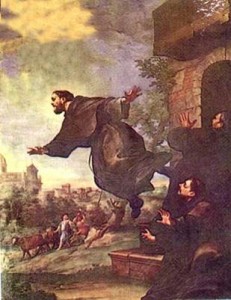
He was born the son of Felice Desa and Francesca Panara in the village of Copertino in the Province of Lecce. His father having died before his birth, however, the family home was seized to settle the large debts he had left, and his mother was forced to give birth to him in a stable.
Joseph began to experience ecstatic visions as a child, which were to continue throughout his life and made him the object of scorn. His life was not helped by his frequent outbursts of anger. He was soon apprenticed by his uncle to a shoemaker. Feeling drawn to religious life, in 1620 he applied to the Conventual Franciscan friars but was rejected by them due to his lack of education. He then applied to the Capuchin friars in Martino, near Taranto, by whom he was accepted in 1620 as a lay-brother, but was soon dismissed as his continued ecstasies made him unfit for the duties required of him.
After Joseph returned to the scorn of his family, he pleaded with the Conventual friars near Copertino to be allowed to serve in their stables. After several years of working there, he had so impressed the friars with the devotion and simplicity of his life that he was admitted as to their Order, destined to become a Catholic priest, in 1625. He was ordained a priest on March 28, 1628.
After this point, the occasions of ecstasy in Joseph’s life began to multiply. It was claimed that he began to levitate while participating at the Mass or joining the community for the Liturgy of the Hours, thereby gaining a widespread reputation of holiness among the people of the region and beyond. He was deemed disruptive by his religious superiors and Church authorities, however, and eventually was confined to a small cell, forbidden from joining in any public gathering of the community. He passed the last 35 years of his life following this regimen.
As the phenomenon of flying or levitation was widely believed to be connected with witchcraft, Joseph was denounced to the Inquisition. He was transferred from one Franciscan friary in the region to another for observation. He practiced severe asceticism throughout his life, usually eating solid food only twice a week.
**************************************************
October 9
Saint Angela de Foligno, OFS
1248 – 1309
Secular Franciscan
On October 9th, in response to numerous appeals to the Holy See by Bishops and Ministers General of the Franciscan Family, Pope Francis declared Blessed Angela de Foligno of Italy a saint.
Born in Umbria in 1248, the mystical writer, after experiencing a stunning conversion, wrote of her experiences and visions, recorded in her Book of Visions and Instructions. This is a canonization that is equal in force and significance. It was Pope Francis’ desire to declare her a saint on October 9th, without the necessity of having a public ceremony for her canonization. The Congregation for the Causes of Saints released this announcement on Friday, October 11th. The Holy Father after having received in audience Cardinal Angelo Amato S.D.B., prefect of the Congregation for the Causes of Saints, extended the liturgical cult of Blessed Angela of Foligno of the Secular Franciscan Order, born in Foligno (Italy) in 1248 and dying in the same place in 1309, to the universal Church, inscribing her in the catalog of saints. Saint Angela of Foligno is a Secular Franciscan. She is our sister, a laywoman, and a mother in the fullest sense. She is a mother of the children born of her womb and prematurely lost, a mother of the disinherited for whom she sold her earthly possessions, and a mother to her spiritual sons and daughters who remained at her side till the end of her life.
The life of Saint Angela began with a worldly existence, rather remote from God. But, later, her encounter with the figure of St Francis and, finally, her encounter with the crucified Christ, reawakened her soul; it is only with God that life becomes true life, because, in sorrow for sin, it becomes love and joy. This is how Saint Angela also speaks to us.
Living a daily life of prayer, Saint Angela is a master guide. The secret of her conversion and her union with Christ crucified is constant prayer. “The more you pray”, she would say, “the more you will be enlightened; (…) the more profoundly and intensely you will see him, the more you will love him.”
“Without heavenly light, no man can be saved….if you wish to gain possession of this light, pray…; if you wish to increase this light within you, pray; if you want faith, pray; if you want hope, pray; if you want charity, pray; if you want poverty, pray; if you want true obedience, pray; if you want chastity, pray; for whatever the virtue you seek, pray. And pray in this way: by reading in the Book of Life, that is, in the life of the One who is God and man, Jesus Christ” (Instruction II, lines 229 ss.).
Pope Benedict XIV called Saint Angela the “Mistress of Theologians”, because all doctrine has been developed on the Book of Life, Jesus Christ, our Lord.
This identification with Jesus equally signifies living what Jesus himself lived: poverty, contempt, and sorrow, because, as she declared, “through temporal poverty, the soul will find eternal riches; through contempt and shame, it will obtain supreme honor and very great glory; through penance, undertaken with pain and sorrow, it will possess with infinite sweetness and consolation the Supreme Good, God Eternal”
Today, we all risk living as though God does not exist; he seems so distant from daily life. But God has thousands of ways, one for each of us, to be present in the soul, to show that he exists and knows me and loves me. And, Saint Angela wants to make us attentive to these signs with which the Lord touches our soul, attentive to the presence of God, so as to learn life with God and towards God, in communion with Christ crucified. (Benedict XVI 2010 10 13)
**************************************************
October 9
Blessed Luis Obdulio Arroyo Navarro, OFS
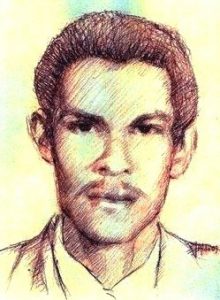
Secular Franciscan
Declared Blessed
On October 9, 2017, Pope Francis received in audience his Eminence Cardinal Angelo Amato, S.D.B., prefect of the Congregation for the Causes of Saints. He authorized the Dicasterate to promulgate a Decree on the martyrdom of the servants of God Tullio Maruzzo, a priest of the order of Friars Minor and Luis Obdulio Arroyo Navarro, a member of the Secular Franciscan Order of Saint Francis of Assisi, killed on July 1, 1981, in odium fidei in Los Amates, in the Apostolic Vicariate, Izabal in Guatemala.
Luis Obdulio Arroyo Navarro was the faithful companion that the Lord placed next to Br. Tullio in the moment of ultimate sacrifice. He was born in Quiriguá (Guatemala) on 21 June 1950. He worked as a driver for the municipality of Los Amates. At the age of 26 years, he joined the Secular Franciscan Order, and become a Catechist in the parish. On the evening of 1 July 1981, on the way back from a meeting of Cursillos of Christianity, de Los Amates, Br. Tullio and Luis Obdulio fell victim to an ambush by those who wanted to silence their work of evangelization.
Their cause of beatification, promoted by the Veneto province of Friars Minor, began in the year 2005.
**************************************************
October 21
Saint Anna Schäffer, OFS
1882 – 1925
Secular Franciscan
The Holy Father, Benedict XVI. has canonized Anna Schaffer, a secular Franciscan, in the Holy Mass celebrated on the St. Peter’s square in Rome, on October 21st.
In whatever form, suffering seems to be, and is, almost inseparable from man’s earthly existence… Human suffering evokes compassion;it also evokes respect, and in its own way it intimidates. For in suffering is contained the greatness of a specific mystery… Down through the centuries and generations, it has been seen that in suffering there is concealed a particular power that draws a person interiorly close to Christ, a special grace. To this grace, many saints, such as Saint Francis of Assisi, Saint Ignatius of Loyola and others, owe their profound conversion. A result of such a conversion is not only that the individual discovers the salvific meaning of suffering but above all that he becomes a completely new person (Apostolic Letter Salvifici doloris, SD, John Paul II, February 11, 1984 nos. 3, 4, 26). The life of Holy Anna Schäffer singularly illustrates this observation by the Holy Father.
Anna Schäffer was born in Mindelstetten, a village in Lower Bavaria in the diocese of Regensburg, in southern Germany, on February 18, 1882, into a large family, the father of which worked as a joiner. The Schäffers were good Christians. Faithful to their morning, midday, and evening prayers, they went to church every Sunday and feast day, but also during the week when possible. Anna was a quiet, gentle, and shy child, a gifted student and skillful at manual work. In 1896, her father died at the age of forty, leaving the family in terrible poverty. Anna, who wished to become a nun, and in a missionary congregation if possible, had to work so as to build up her dowry (a financial contribution one had to make at that time in order to enter a convent.) When she was fourteen, she started working as a gofer, first in Regensburg at a pharmacy, then in Landshut in the office of a councilor to the magistrates’ court. There, one night in June 1898, she received a message from Heaven for the first time—a Saint appeared to her (she did not know his name) and told her, Before you turn twenty, you will begin to suffer a great deal. Say the Rosary. She would later speak of dangers to her virginal purity that she was able to overcome during these years, thanks to the Holy Rosary.
On the evening of February 4, 1901, the young woman, working at the forester house in Stammham, was doing the laundry with a female companion, Wally Kreuzer. The stovepipe that went above the boiler became detached from the wall. To repair it, Anna climbed on a low wall jutting out. Suddenly, she lost her balance and fell up to her knees in the boiling laundry water. Panic-stricken, Wally, instead of helping her companion, went running for help. A coachman ran up and pulled the injured girl from the boiler. She was taken in a cart to the nearest hospital, seven kilometers away. At eleven o’clock that night, she was finally seen by a doctor who operated on her for two hours. The weeks that followed were terrible—it was necessary to constantly cut away pieces of gangrenous flesh.
More than thirty operations
Three months later, the medical insurance Anna was under stopped paying coverage. Mrs. Schäffer could not take on responsibility for hospitalization, and so had to bring her poor child back home. Upon Doctor Wäldin’s entreaties, an institution for invalids took care of the sick girl. Anna would be hospitalized at the clinic at the University of Erlangen (close to Nuremberg) from August 1901 till May 1902. Yet the treatments did not have any effect. Upon her return home, Anna was competently cared for by Dr. Wäldin. This doctor tried in vain to perform skin grafts through over thirty operations. Since he was unable to bring the sick girl relief, he finally resigned himself to wrapping her legs in sterile bandages. For the remaining twenty years of Anna’s life, care would be limited to the weekly changing of these dressings.
Anna Schäffer’s plan to enter religious life was unfeasible from that point on. The young woman did not resign herself to her fate without difficulty—she complained of her suffering and clung to the hope of being cured. Nevertheless, her soul matured in the difficult school of the Cross. The parish priest in Mindelstetten, Father Rieger, who would be her spiritual father, was to testify that he had never heard a word of complaint fall from her lips. In her constant suffering, Anna was strengthened and consoled by the living God and especially by the Holy Eucharist.
People react to suffering in different ways wrote Pope John Paul II. But in general, it can be said that almost always the individual enters suffering with a typically human protest and with the question ‘why?’ He asks the meaning of his suffering and seeks an answer to this question on the human level. Certainly, he often puts this question to God, and to Christ. Furthermore, he cannot help noticing that the One to whom he puts the question is Himself suffering and wishes to answer him from the Cross, from the heart of His own suffering. Nevertheless, it often takes time, even a long time, for this answer to begin to be interiorly perceived… Christ does not explain in the abstract the reasons for suffering, but before all else, He says: ‘Follow me! Come! Take part through your suffering in this work of saving the world, a salvation achieved through my suffering! Through my Cross.’ Gradually, as the individual takes up his cross, spiritually uniting himself to the Cross of Christ, the salvific meaning of suffering is revealed before him» (SD, no. 26).
From 1910 to 1925, Anna Schäffer wrote her thoughts in twelve notebooks. One hundred eighty-three of her letters or notes are also intact. Her language is quite simple, yet the originality and personal character of her writings strike the reader, who discovers in them a soul firmly established in faith in Jesus Christ, dead and resurrected, and in the living Communion with all God’s elect. This unfailing confidence in God, this certainty in His infinite love manifesting itself to her through her sufferings, shone on those who approached her to entrust to her their intentions or to ask her for encouragement or advice. These visitors, at first just a handful, slowly grew in number. Those who were the most prejudiced against Anna did not fail to be impressed by her patience and her kindness.
Anna’s «revenge»
Her brother Michael, a poor soul who took to drink, was not the last when he drank to mock the Saint. Anna took her «revenge by making a point of converting him with gentleness. Nevertheless, Michael’s behavior forced Mrs. Schäffer to rent a little apartment in the village to move into with her daughter. Anna wrote to this admirable mother who assisted her daughter until her death and whom she would outlive four years, Oh my dear mother, what a grace it is to have you constantly by my side! Our dear Lord sends His children help in the hour of need when we ask it of Him in confidence, and it is often when a trial or affliction most overwhelms us that He is closest to us with His help and His blessing.
Accessible by an extremely steep staircase, the only decorations in the sick woman’s room were a crucifix, an Ecce Homo, and pictures of saints. Anna hardly left her room and her bed (which she also called her bed-cross.) On rare occasions, she was brought to the church in an armchair. As soon as Pope Saint Pius X permitted daily communion, Father Rieger brought her the Eucharist every day, from which she drew her strength.
Anna did not care much for being famous. Her days passed in prayer, manual labor and writing. I have three keys to heaven, she said. The biggest is made out of pig iron and is heavy—it is my suffering. The second is the sewing needle, and the third is the penholder. With these different keys, I strive each day to open the door to Heaven. Each of them must be decorated with three little crosses, which are prayer, sacrifice, and selflessness. Often, the children in the village came to visit Anna. They were attracted to her. The sick woman spoke to them about the Savior, the Blessed Virgin, and the saints. She explained to them how people go to Heaven. The whole town of Mindelstetten was by and large sympathetic towards her. People loved her and pitied her, and sought to please her. On feast days, a delegation from the village came to visit her; sometimes the whole village band offered her a serenade while passing under her window.
It was charity towards her neighbor who was also suffering that brought Anna out of her usual silence. As soon as she saw a person experiencing difficulty, she found a thousand cheery and friendly words to comfort him or her and seemed herself to be the happiest of creatures. She treasured all the prayer intentions that were entrusted to her and presented them tirelessly to God. All of Anna’s writings give evidence of a profound submission to Divine Providence and joyous acceptance of crosses. Quite often, her letters bear a little pen and ink illumination in two or three colors, representing the Cross, a chalice surrounded with thorns, or some other scene from the Passion. Dear Fanny, she wrote to a friend on December 14, 1918, we must consider our sufferings to be our dearest friends who wish to accompany us constantly, day and night, to remind us to look on high, to the Holy Cross of Christ.
Job is not guilty
In every age, men and women have searched for the meaning of suffering. In the Book of Job the question has found its most vivid expression, Pope John Paul II remarks. The story of this just man, who without any fault of his own is tried by innumerable sufferings, is well known… In this horrible situation, three old acquaintances come to his house, and each one in his own way tries to convince him that since he has been struck down by such varied and terrible sufferings, he must have done something seriously wrong… Job, however, challenges the truth of the principle that identifies suffering with punishment for sin… In the end, God Himself reproves Job’s friends for their accusations and recognizes that Job is not guilty. His suffering is the suffering of someone who is innocent and it must be accepted as a mystery, which the individual is unable to penetrate completely by his own intelligence… While it is true that suffering has a meaning as punishment, when it is connected with a fault, it is not true that all suffering is a consequence of a fault and has the nature of a punishment…
But in order to perceive the true answer to the ‘why’ of suffering, we must look to the revelation of divine love… For God so loved the world that He gave His only Son, that whoever believes in Him should not perish but have eternal life (Jn. 3:16). Man ‘perishes’ when he loses ‘eternal life’… The only-begotten Son was given to humanity primarily to protect man against this definitive evil and against definitive suffering…
Christ suffers voluntarily and suffers innocently… Human suffering has reached its culmination in the Passion of Christ. And at the same time, it has entered into a completely new dimension and a new order: it has been linked to love, … to that love which creates good, drawing it out by means of suffering, just as the supreme good of the Redemption of the world was drawn from the Cross of Christ…In [the Cross of Christ] we must also pose anew the question about the meaning of suffering, and read in it, to its very depths, the answer to this question» (SD, nos. 10, 11, 13, 14, 18).
How quickly the time goes by!
Anna had been a member of the Secular Franciscan Order for a long time. Beginning on October 4, 1910, the feast of St. Francis, she bore the stigmata of the Passion for a time, but she begged God to make these mystical wounds apparent, which was granted her. It does not seem that she read Holy Scripture a great deal, but as a daughter of the Catholic Church, she laid claim to its doctrine and liturgy, which she went over in the course of the year with the help of her childhood memories. To pray for the holy Church and her pastors is the most important thing for me, she affirmed. She understood her life as an invalid as a participation in the Cross of Christ. In the hours of suffering and in the many sleepless nights, I have the wonderful opportunity to place myself in spirit before the tabernacle and to offer expiation and reparation to the Sacred Heart of Jesus. Oh, how quickly the time goes by for me then! Sacred Heart of Jesus, hidden in the Blessed Sacrament, I thank You for my cross and my sufferings, in union with the thanksgivings of Mary, the Mother of Sorrows.
The Redeemer suffered in place of man and for man… Each one is also called to share in that suffering through which the Redemption was accomplished… In bringing about the Redemption through suffering, Christ has also raised human suffering to the level of the Redemption. Thus each man, in his suffering, can also become a sharer in the redemptive suffering of Christ…Whoever suffers in union with Christ completes what is lacking in Christ’s afflictions (Col. 1:24)…The sufferings of Christ created the good of the world’s Redemption. This good in itself is inexhaustible and infinite. No man can add anything to it. But at the same time, in the mystery of the Church as His Body, Christ has in a sense opened His own redemptive suffering to all human suffering… This Redemption lives and develops as the Body of Christ, the Church, and in this dimension, every human suffering, by reason of the loving union with Christ, completes the suffering of Christ. It completes that suffering just as the Church completes the redemptive work of Christ» (SD, nos. 19, 24).
Our Lord Jesus Christ, the Blessed Virgin, and the Saints spoke frequently to Anna in her dreams at night, and these messages from Heaven were for her a refreshment and a foretaste of Paradise. But these consolations never gave her a superhuman impassiveness. Until the very end, she accepted with gratitude the limited relief that medicine brought her. Over the course of the twenty-five years of her martyrdom, she improved in the interior acceptance of her trials. She gradually discovered the secret of interior peace, which she thus expressed in her quite simple language: Oh! What happiness and what love are hidden in the cross and suffering!… I do not spend fifteen minutes without suffering, and for some time I have not known what it is to be without pain… I often suffer so much that I can hardly say a word—when this happens, I think that my Father of the Heavens must particularly love me. As in the words of Saint Paul: I am overflowing with joy all the more because of all our affliction (2 Cor. 7:4), she suffered from a mysterious, subtle joy.
A source of joy
A source of joy is found in the overcoming of the sense of the uselessness of suffering… This feeling not only consumes the person interiorly but seems to make him a burden to others. The person feels condemned to receive help and assistance from others and at the same time seems useless to himself. The discovery of the salvific meaning of suffering in union with Christ transforms this depressing feeling… In the spiritual dimension of the work of Redemption the person who is suffering is serving, like Christ, the salvation of his brothers and sisters. Therefore he is carrying out an irreplaceable service… Those who share in the sufferings of Christ preserve in their own sufferings a very special particle of the infinite treasure of the world’s Redemption and can share this treasure with others (SD, no. 27).
Three and a half years before her death, Anna had to stop her sewing work, which provided her relaxation and an opportunity to be useful. In addition, it became absolutely impossible to carry her to the neighboring parish church to attend Mass, and this renunciation was very painful for her. She wrote, My life is fading away little by little in suffering… Eternity is ever approaching. Soon, I will live from God, Who is Life itself. Heaven has no price, and I rejoice every minute in the Lord’s call to the infinitely beautiful homeland (March 16, 1922). On October 5, 1925, after having received Holy Communion and made the sign of the cross, murmuring Lord Jesus, I love You, Anna Schäffer died peacefully, at the age of 43. Her body lies in the cemetery in Mindelstetten, awaiting the «resurrection of the flesh, (cf. Catechism of the Catholic Church, 988-1019). Christ has overcome the world definitively by His Resurrection. Yet, because of the relationship between the Resurrection and His Passion and Death, He has at the same time overcome the world by His suffering. Yes, suffering has been singularly present in that victory over the world which was manifested in the Resurrection. Christ retains in His risen body the marks of the wounds of the Cross in His hands, feet and side. Through the Resurrection, He manifests the victorious power of suffering» (SD, no. 25).
As the Good Samaritan did
The power of suffering is also left to men and women so as to bring about the civilization of love: The first and second parts of Christ’s words about the Final Judgment (Mt. 25:34-45) unambiguously show how essential it is, for the eternal life of every individual, to ‘stop,’ as the Good Samaritan did, at the suffering of one’s neighbor, to have ‘compassion’ for that suffering, and to give some help. In the messianic program of Christ, which is at the same time the program of the Kingdom of God, suffering is present in the world in order to release love, in order to give birth to works of love towards neighbor, in order to transform the whole of human civilization into a ‘civilization of love.’ In this love, the salvific meaning of suffering is completely accomplished and reaches its definitive dimension» (SD, no. 30).
The Pope thus concludes his apostolic exhortation: «And we ask all you who suffer to support us. We ask precisely you who are weak to become a source of strength for the Church and humanity. In the terrible battle between the forces of good and evil, revealed to our eyes by our modern world, may your suffering in union with the Cross of Christ be victorious! (SD, no.31). Anna Schäffer was victorious thanks to Jesus’ Cross. Even before the official judgment of the Church, a number of people in Bavaria, then throughout Europe, came to her grave to beseech her help. In 1998, 551 graces obtained through her intercession were registered with the parish in Mindelstetten. Since 1929, more than 15,000 graces attributed to her prayer have been reported.
During her beatification on March 7, 1999, Pope John Paul II said, If we look to Blessed Anna Schäffer, we read in her life a living commentary on what Saint Paul wrote to the Romans: Hope does not disappoint, because the love of God has been poured out into our hearts through the Holy Spirit that has been given to us (Rom. 5:5). She most certainly was not spared the struggle to abandon herself to the will of God. But she was given to grow in the correct understanding that weakness and suffering are the pages on which God writes His Gospel… Her sickbed became the cradle of an apostolate that extended to the whole world.
She was canonized by Pope Benedict XVI on October 21st, 2012, the world mission day
**************************************************
Nov 17
St. Elizabeth of Hungary, OFS
1207-1231
Secular Franciscan
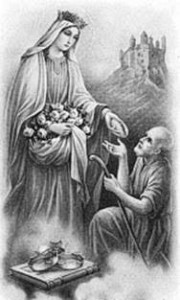
In 1207 a daughter was born to pious King Andrew II of Hungary. She received the name of Elizabeth in baptism. The child was so lovable that the wealthy landgrave of Thuringia and Hesse sought her as the bride of his eldest son Louis. His request was granted, and a solemn embassy went to get Elizabeth, then only three years old, so that she could be raised at her future husband’s castle.
The two children loved each other like brother and sister and vied with each other in acts of piety and charity. Those who beheld Elizabeth at prayer might well have believed they saw an angel. Her greatest joy was to give things to the poor. When she grew a little older, she visited the poor and the sick and waited on them with as much reverence as if she were serving Christ Himself.
The proud dowager Landgravine Sophia was displeased with Elizabeth’s conduct and endeavored to talk her son into sending Elizabeth back to Hungary and choosing a bride of more princely ways. But Louis was aware of the treasure he possessed in Elizabeth. Succeeding his father at the age of 18 he took over the government and married Elizabeth. Their marriage was unusually happy, and Louis gave his wife full liberty to do all the good her heart desired.
At Eisenach, Elizabeth built a large hospital. During a famine, she daily fed nine hundred needy people. The story is told that once when she was on her way with her cloak full of good things for her dear poor and sick, she met her husband, who teasingly blocked her path until she would show him what she was carrying away this time. How astonished was he to behold fresh, fragrant roses in midwinter. Reverently he permitted his spouse to go on her charitable way.
When Louis was away, it was Elizabeth’s duty to take over the regency, and this she did with great prudence and care. Whatever spare time she had, she spent on the poor, the sick, and especially the lepers. It is related that once she took in a little leper boy whom no one cared to have about, and after caring for him as if he were her own child, placed him in the royal bed. But Louis returned unexpectedly at this time, and the angry dowager ran to tell him what Elizabeth had done and how she would surely cause him to be infected. Quite stirred, Louis went to the bed and tore aside the covers. But he was amazed and moved to tears when he beheld there the form of the Crucified. Turning to his wife he said, “Dear Elizabeth, you may always receive guests like that. I shall even thank you for it.”
But Elizabeth, too, was to be tried by the crucible of suffering. Emperor Frederick II set out on a crusade to the Holy Land in 1227, and pious Landgrave Louis joined the expedition. But he died on the way, in southern Italy. When the news reached Thuringia, Louis’ brothers rose up against Elizabeth. She was driven out of the palace; only two faithful maids went with her. In Eisenach, the people dared not give her shelter fearing the resentment of the new masters. It was midwinter and night was at hand. The daughter of a king, a widowed princess, with four little children, the youngest scarcely 2 months old was completely destitute and homeless.
A man finally offered her shelter in a stable. Grateful for the kindness. Elizabeth thought of how the Son of God on coming down from heaven, was refused admittance at all doors of Bethlehem and found refuge in a stable. The thought filled her with greater joy than she had ever experienced in her palace. At midnight, when the bells of the nearby Franciscan convent, which she had built, announced the chanting of the Divine Office, she begged the friars to sing the Te Deum in thanksgiving for the favor that she and her children were made so like Jesus. With her faithful servants, Elizabeth now arranged things as best she could. She spun flax for a livelihood, saving something from the meager income to give to the poor.
Later Elizabeth was reinstated in the Wartberg, and Emperor Frederick II, whose wife had died, asked her hand in marriage. But Elizabeth had so learned to love poverty and seclusion that she had no desire for worldly greatness. Her children were given the education due to princes, but she and her two maids repaired to a small house near the Franciscan church in Marburg. Elizabeth had joined the Third Order of St. Francis during the lifetime of her husband. Indeed, she was the first member in Germany and received a message from St. Francis himself. Now, vested with the habit and the cord, she led a quiet religious life, meanwhile nursing the sick in the hospitals, and submitting her whole life to the direction of the learned and devout Friar Conrad.
Our Lord announced to her that He would soon call her to heaven. She told her Father Confessor, who had fallen seriously ill, that he would recover, but that she would die soon. Within 4 days she became ill and was prepared for her final hour by her confessor, who had recovered.
Elizabeth was admitted into heaven on November 19, 1231, when she was only 24 years old. The miracles that took place at her tomb were so numerous that Pope Gregory IX canonized her already in 1235. She is the special patroness of the sisters of the Third Order Secular of St. Francis, and also of some religious sisterhoods of the Third Order Regular. Pope Leo XIII placed all charitable organizations of women under her patronage.
**************************************************
